Auto EDA.
Project description
Releases
G-Look: Auto ML
Glook is an automated Python library that provides a graphical user interface (GUI) for supervised and unsupervised learning. It encompasses everything from EDA, preprocessing, data partitioning, model training with hyperparameter training, multiple models training comparison, custom model training, and deployment demonstrations. With Glook, you can easily manage and streamline your entire machine learning workflow in one comprehensive library.
Do check out G-Vision Automation package for computer vision tasks. The package offers tools for image classification, object detection, and more.
⚠️ BEFORE INSTALLATION ⚠️
Before installing glook, it's strongly recommended to create a new Python environment to avoid potential conflicts with your current environment.
Creating a New Conda Environment
To create a new conda environment, follow these steps:
- Install Conda: If you don't have conda installed, you can download and install it from the Anaconda website.
- Open a Anaconda Prompt: Open a Anaconda Prompt (or Anaconda Terminal) on your system.
- Create a New Environment:
To create a new conda environment, use the following command. Replace
my_env_namewith your desired environment name.
- Support Python versions are > 3.8
conda create --name my_env_name python=3.8
- Activate the Environment: After creating the environment, activate it with the following command:
conda activate my_env_name
OR
Create a New Virtual Environment with venv
If you prefer using Python's built-in venv module, here's how to create a virtual environment:
- Check Your Python Installation:
Ensure you have Python installed on your system. You can check by running:
- Support Python versions are > 3.8
python --version
- Create a Virtual Environment:
Use the following command to create a new virtual environment. Replace
my_env_namewith your desired environment name.
python -m venv my_env_name
- Activate the Environment: After creating the virtual environment, activate it using the appropriate command for your operating system:
my_env_name\Scripts\activate
Installation
You can install glook using pip:
pip install glook
Usage
Once installed, navigate to your project directory:
cd /path/to/your/project_directory
Then, you can start Glook Auto-EDA for analysis with the global CLI command:
glook
The G-Look Auto EDA application GUI will launch, allowing you to perform Auto EDA on your dataset interactively.
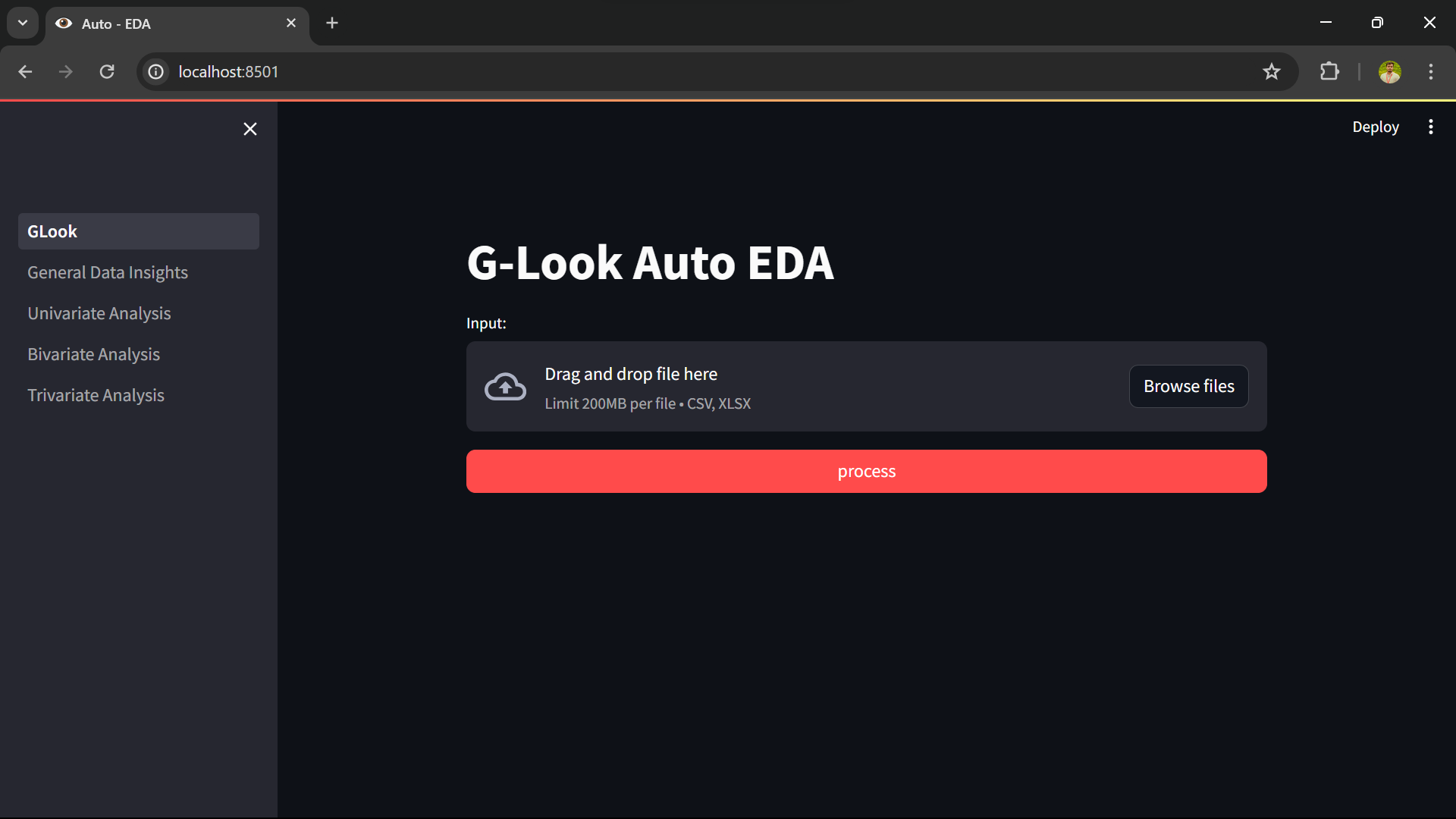
You can also open Glook Auto-ML using the global CLI command glookml:
glookml
The G-Look Auto ML application GUI will launch, allowing you to perform Auto ML on your dataset interactively.
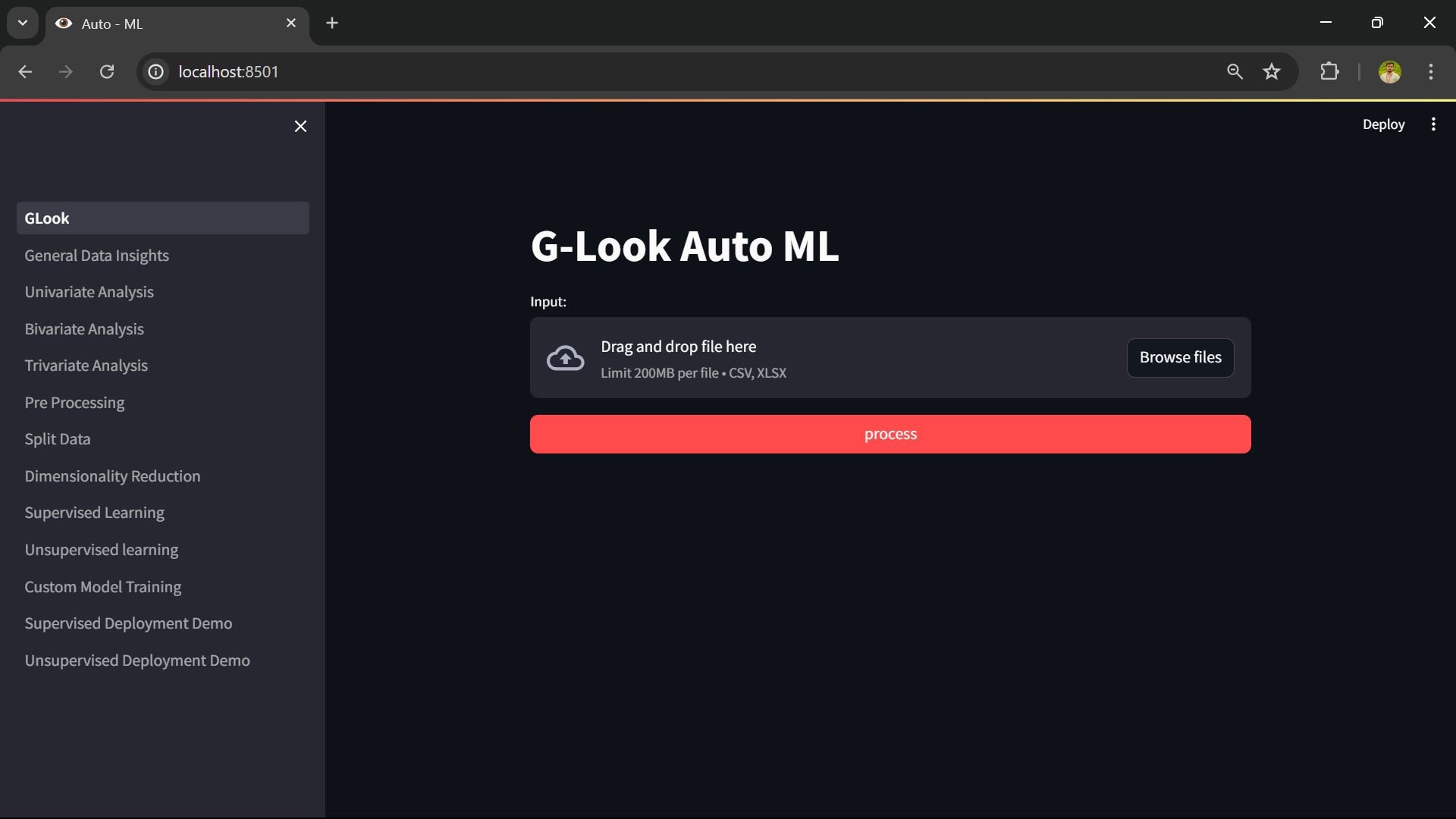
Features
- General Data Insights
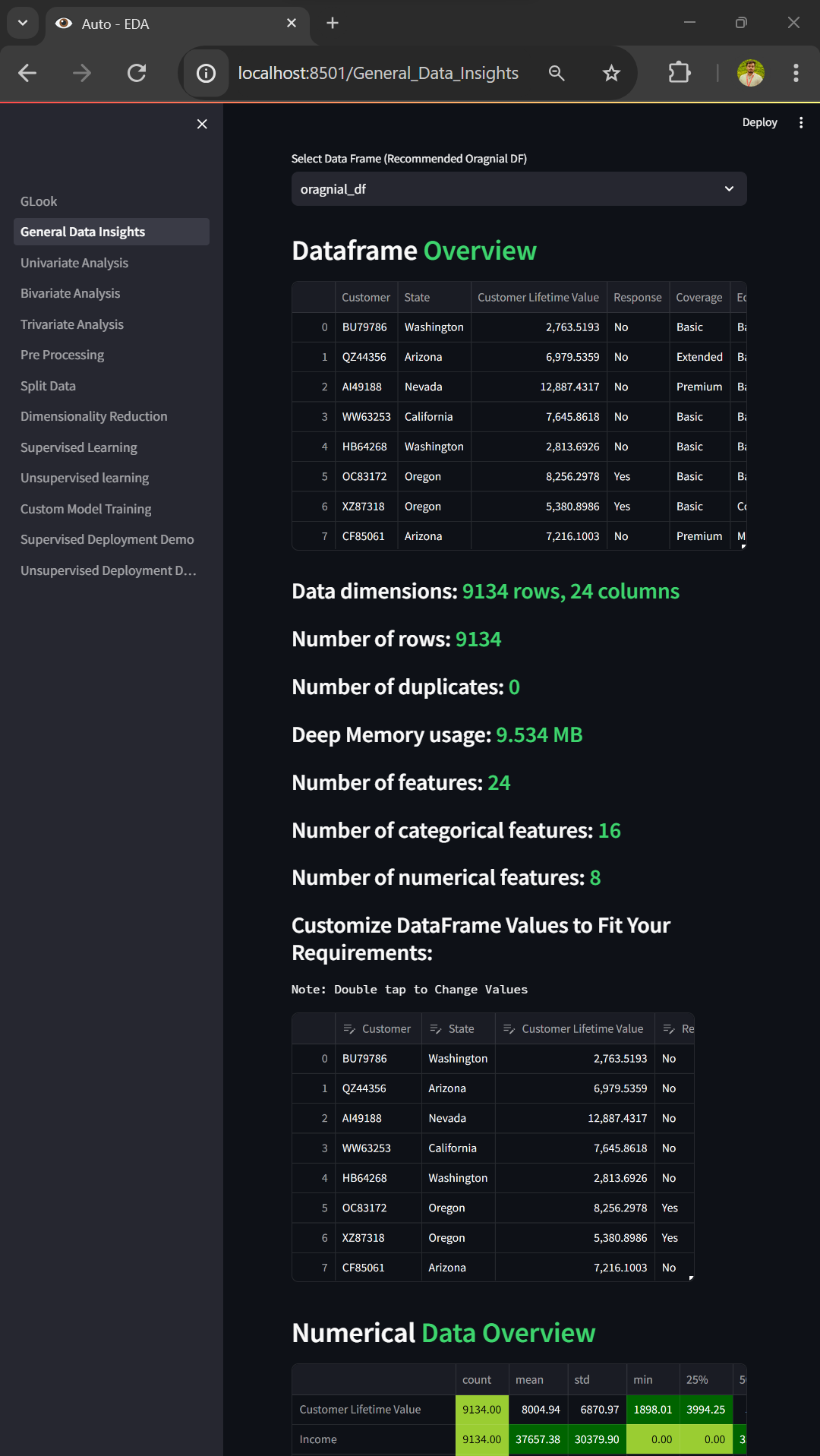
glook & glookml)Univariate Analysis
- Visualize distributions of individual columns using:
- Histograms
- Box plots
- Q-Q plot
- Statistical Calculations:
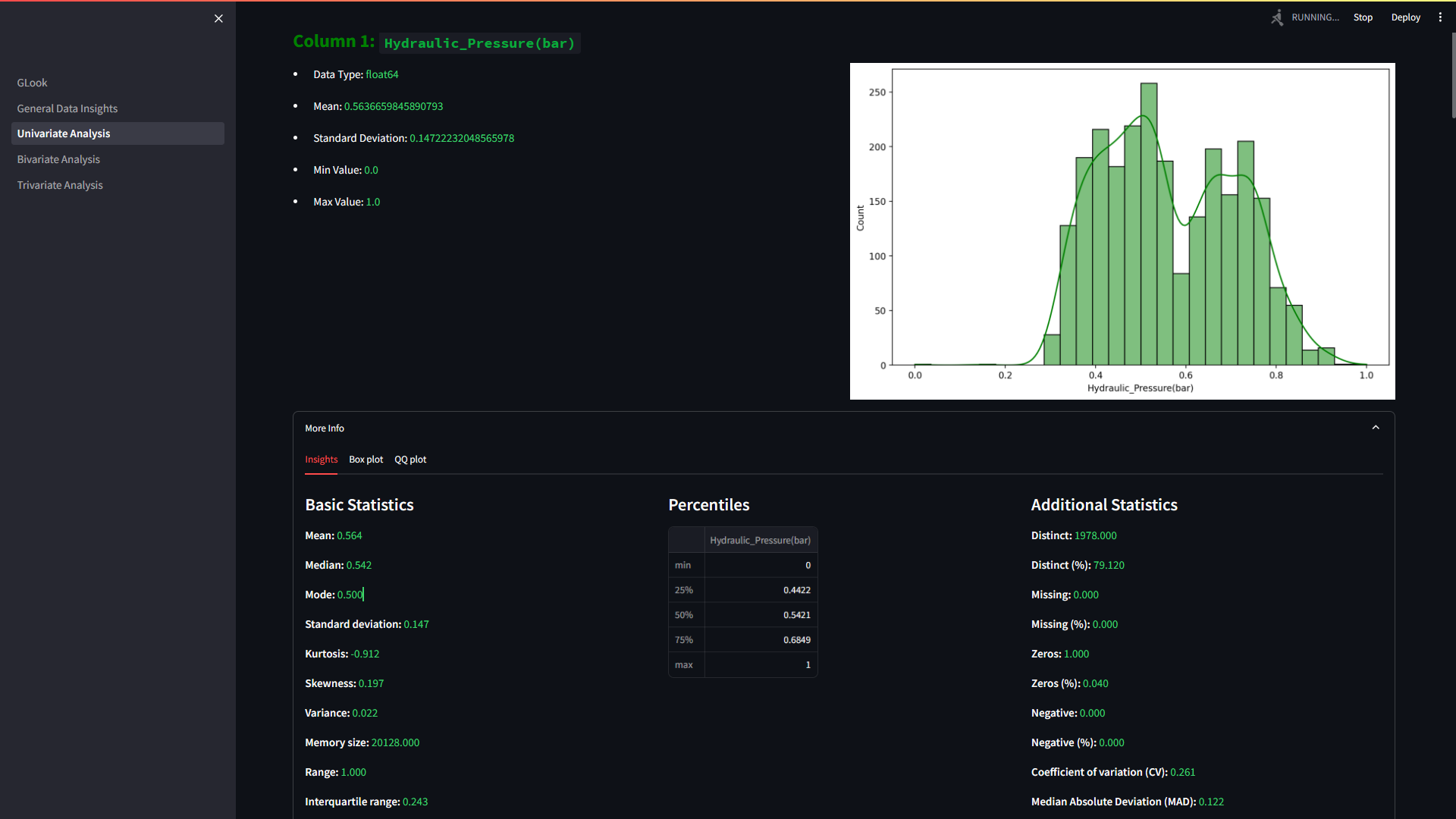
glook & glookml)Bivariate Analysis
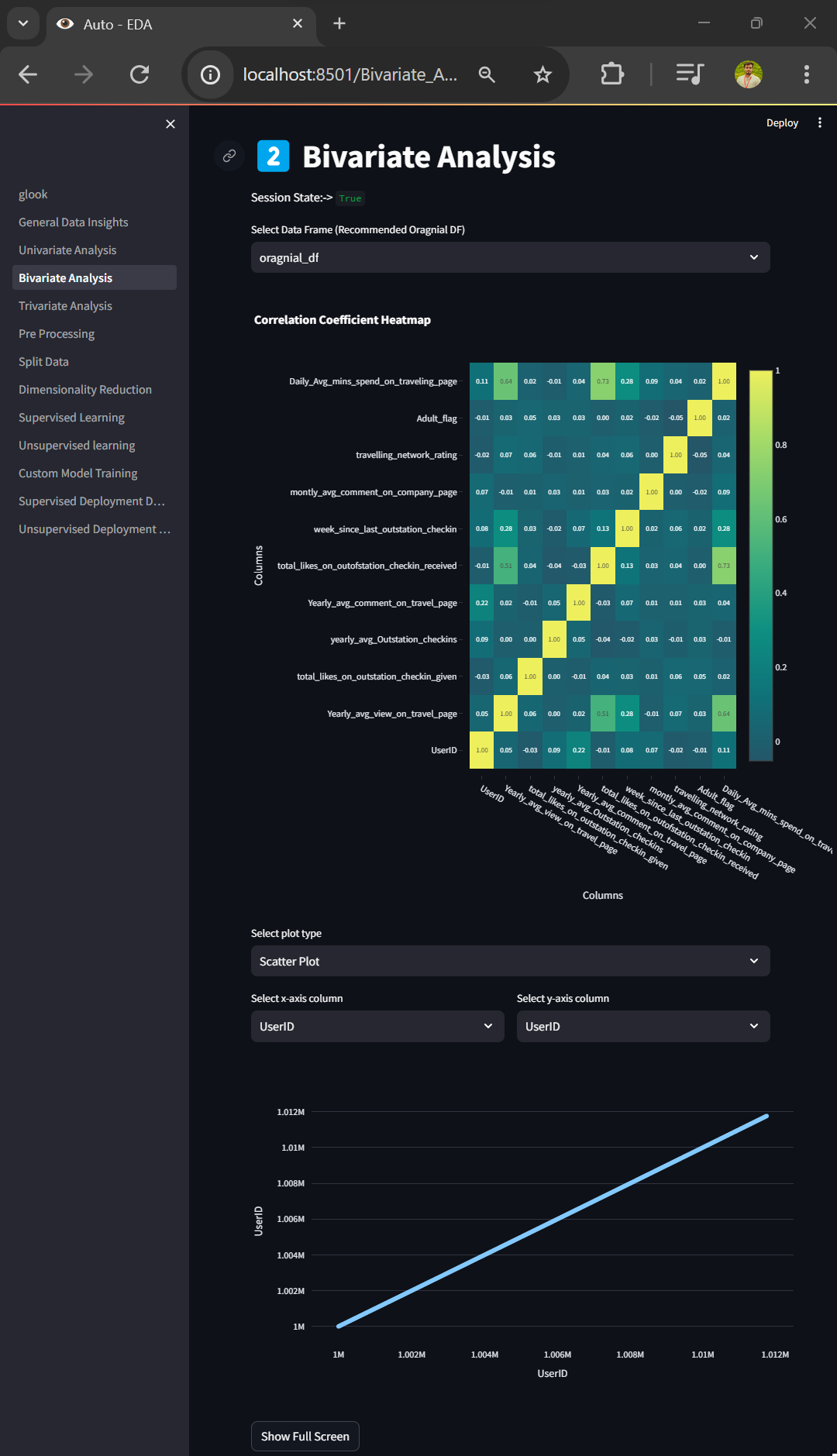
glook & glookml)- Explore relationships between two columns using:
- Scatter plots
- Line plots
- Bar plots
- Histograms
- Box plots
- Violin plots
- Strip charts
- Density contours
- Density heatmaps
- Polar plots
- Polar Bar Plot: Display the relationship between two columns as bars in polar coordinates.
- Select x-axis and y-axis columns to visualize their relationship.
Trivariate Analysis
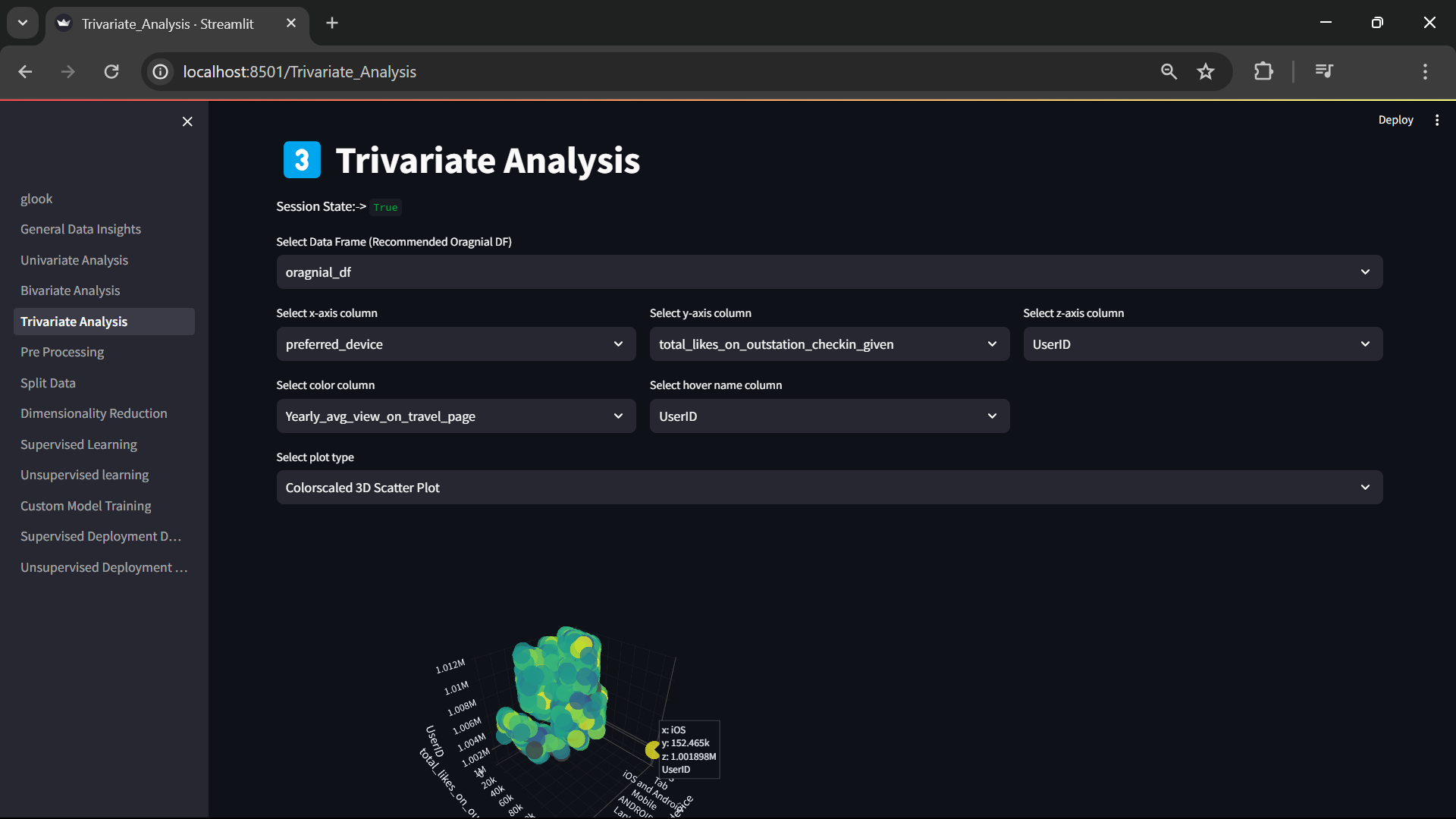
glook & glookml)- Analyze relationships between three columns using:
- 3D Scatter Plot
- Colorscaled 3D Scatter Plot
- Distplot
- Select three columns to visualize their trivariate relationship.
Pre-Processing
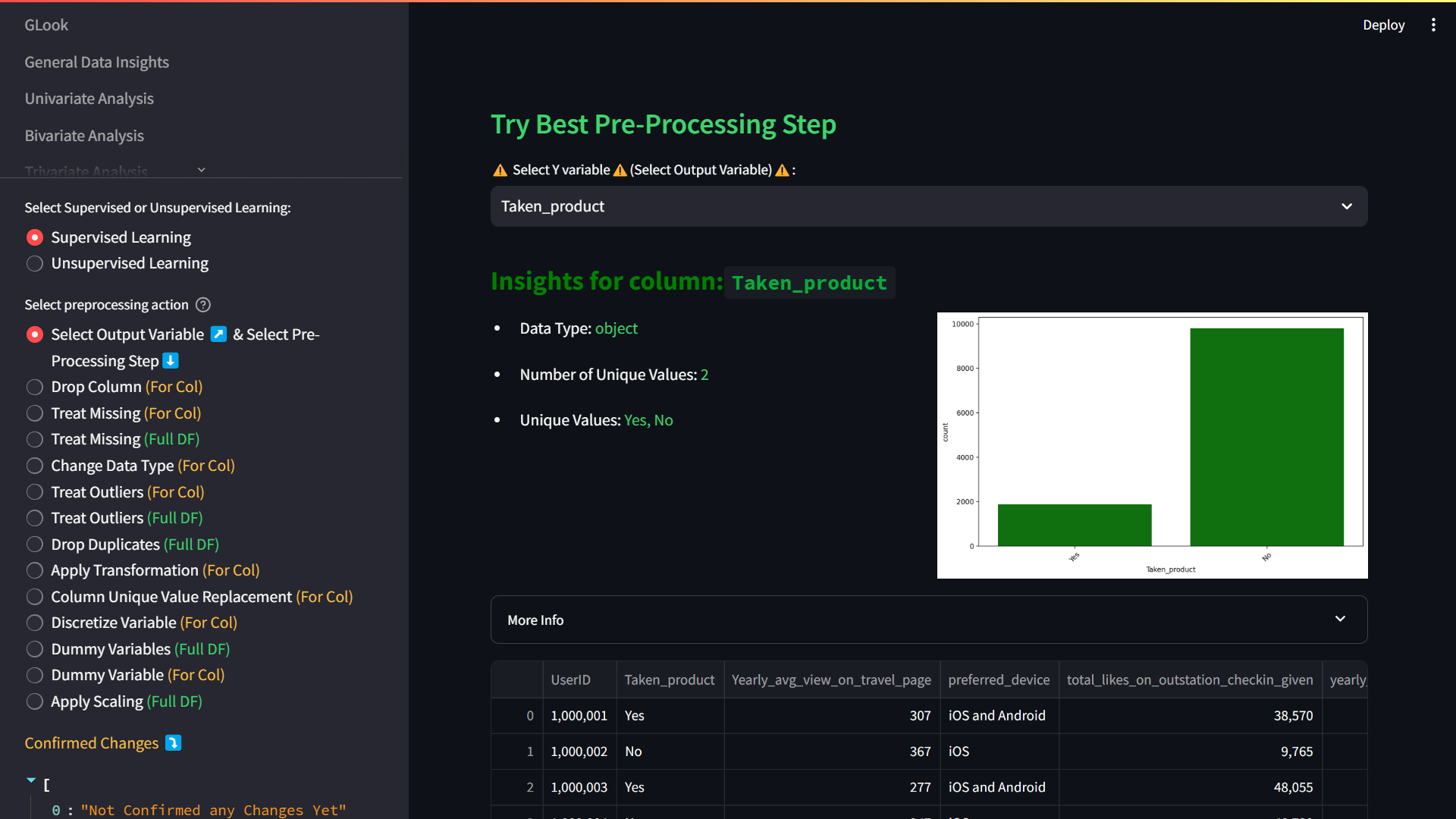
glookml)Note: In the first step of Supervised Learning Pre-Processing, select the Y variable (output variable). After performing each Pre-Processing step, changes will not be saved until you press the Confirm Changes button.
(For Col) means -> operation on particular Column, (Full DF) means -> operation on full DataFrame
| (For Col) | (Full DF) |
|---|---|
| Drop Column (For Col) | |
| Treat Missing (For Col) | Treat Missing (Full DF) |
| Change Data Type (For Col) | |
| Treat Outliers (For Col) | Treat Outliers (Full DF) |
| Apply Transformation (For Col) | Drop Duplicates (Full DF) |
| Column Unique Value Replacement (For Col) | |
| Discretize Variable (For Col) | |
| Dummy Variable (For Col) | Dummy Variables (Full DF) |
Apply Scaling (Full DF) |
- AutoML libraries are designed to save time and speed up the machine learning process. It is recommended to use preprocessing methods that include actions for the entire DataFrame
(Full DF). These methods ensure that preprocessing is consistently applied across all columns, enhancing the efficiency and effectiveness of the data preparation phase.
Data Split
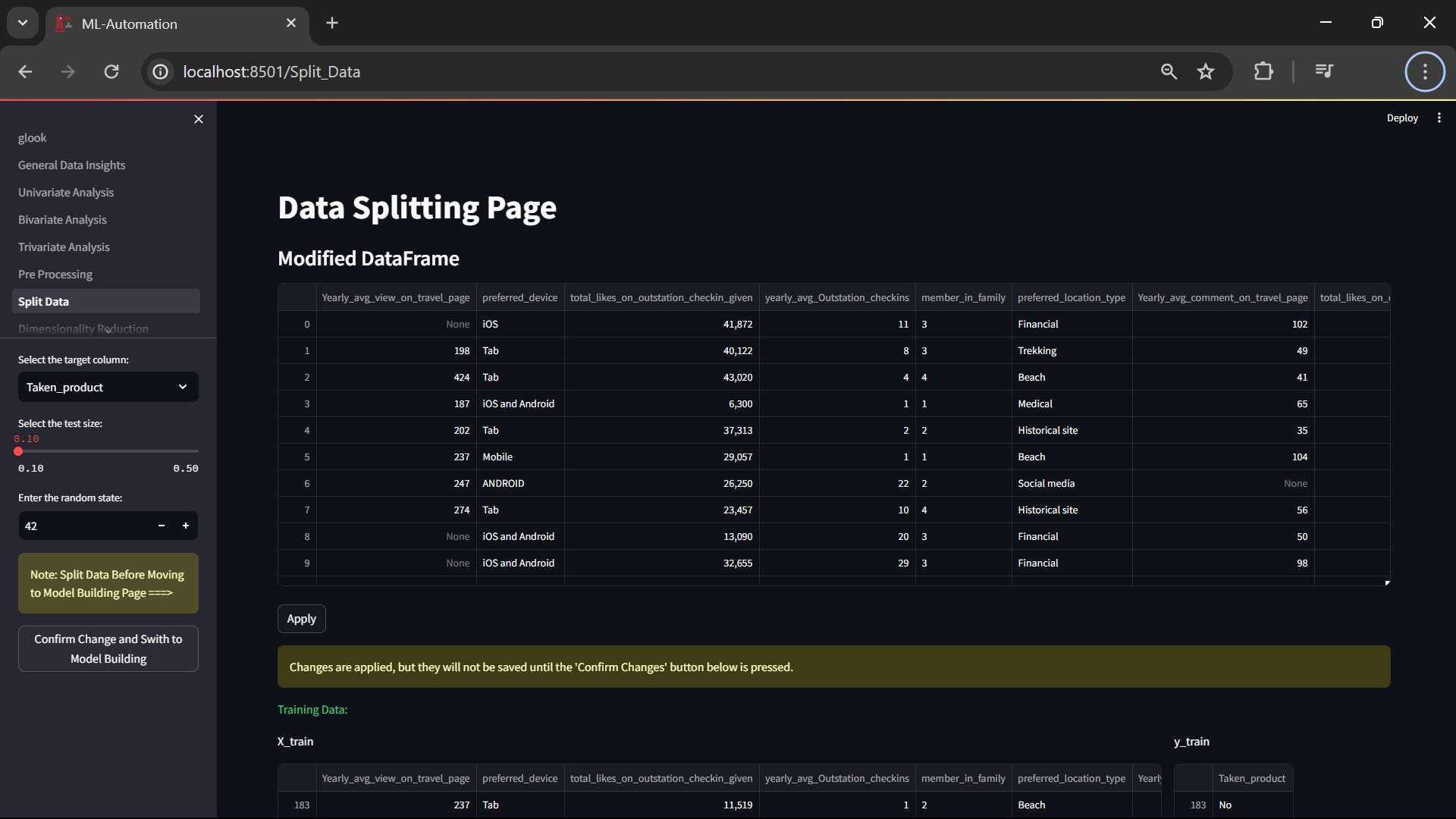
glookml)Supervised Multi Model Building for Comparison
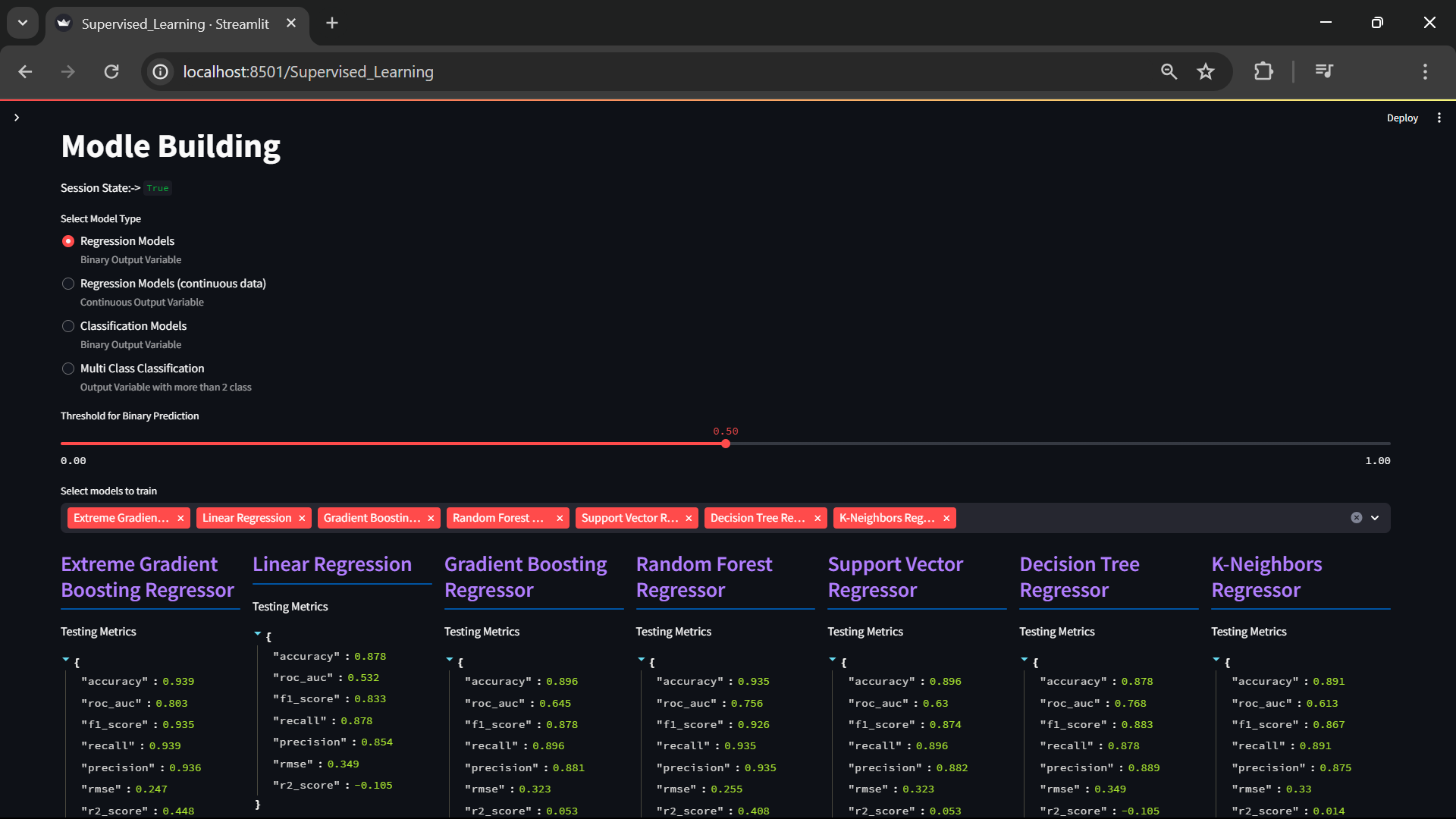
glookml)Supervised Multi Model Comparison Charts
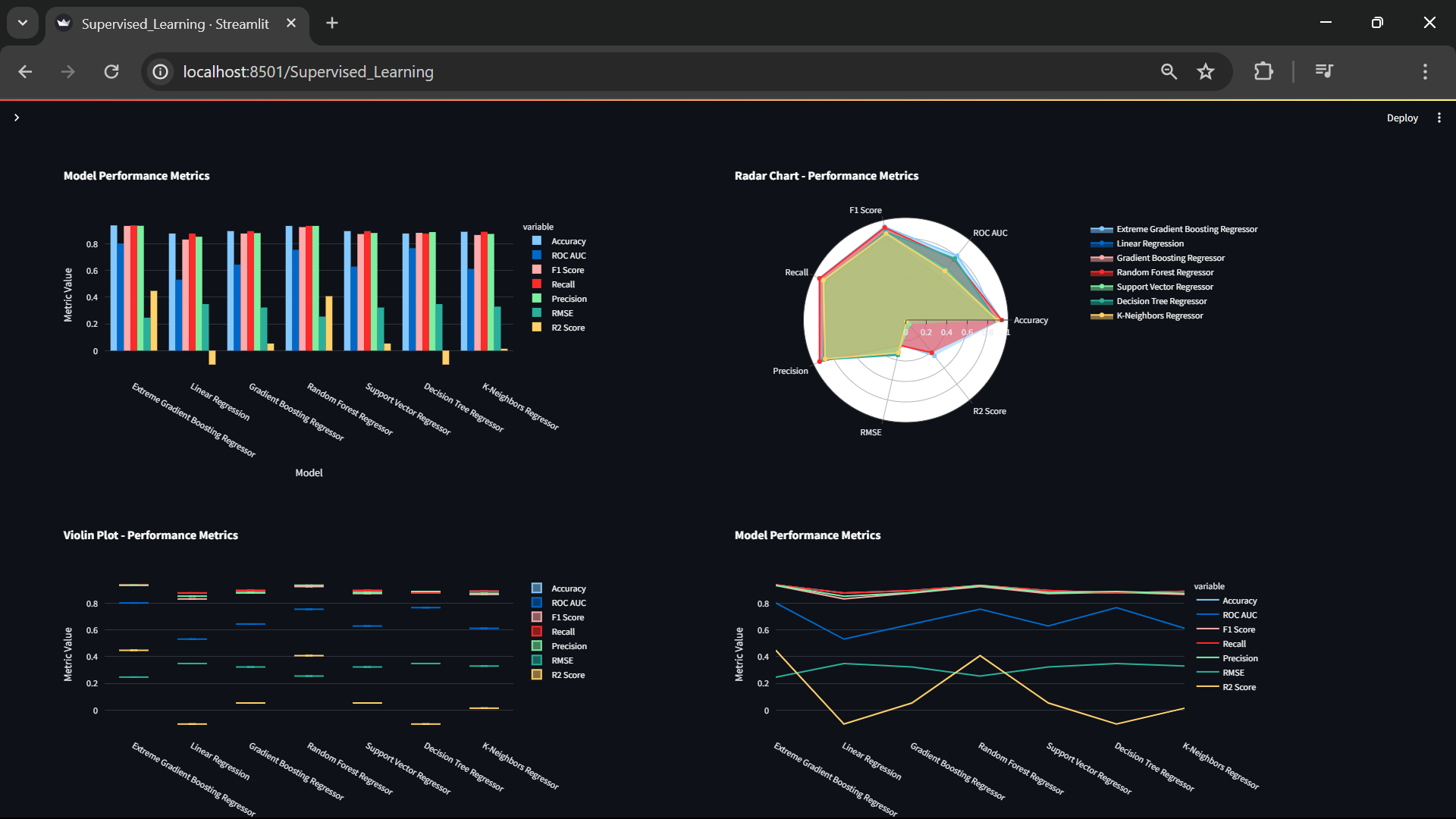
glookml)Un-supervised Multi Model Building for Comparison
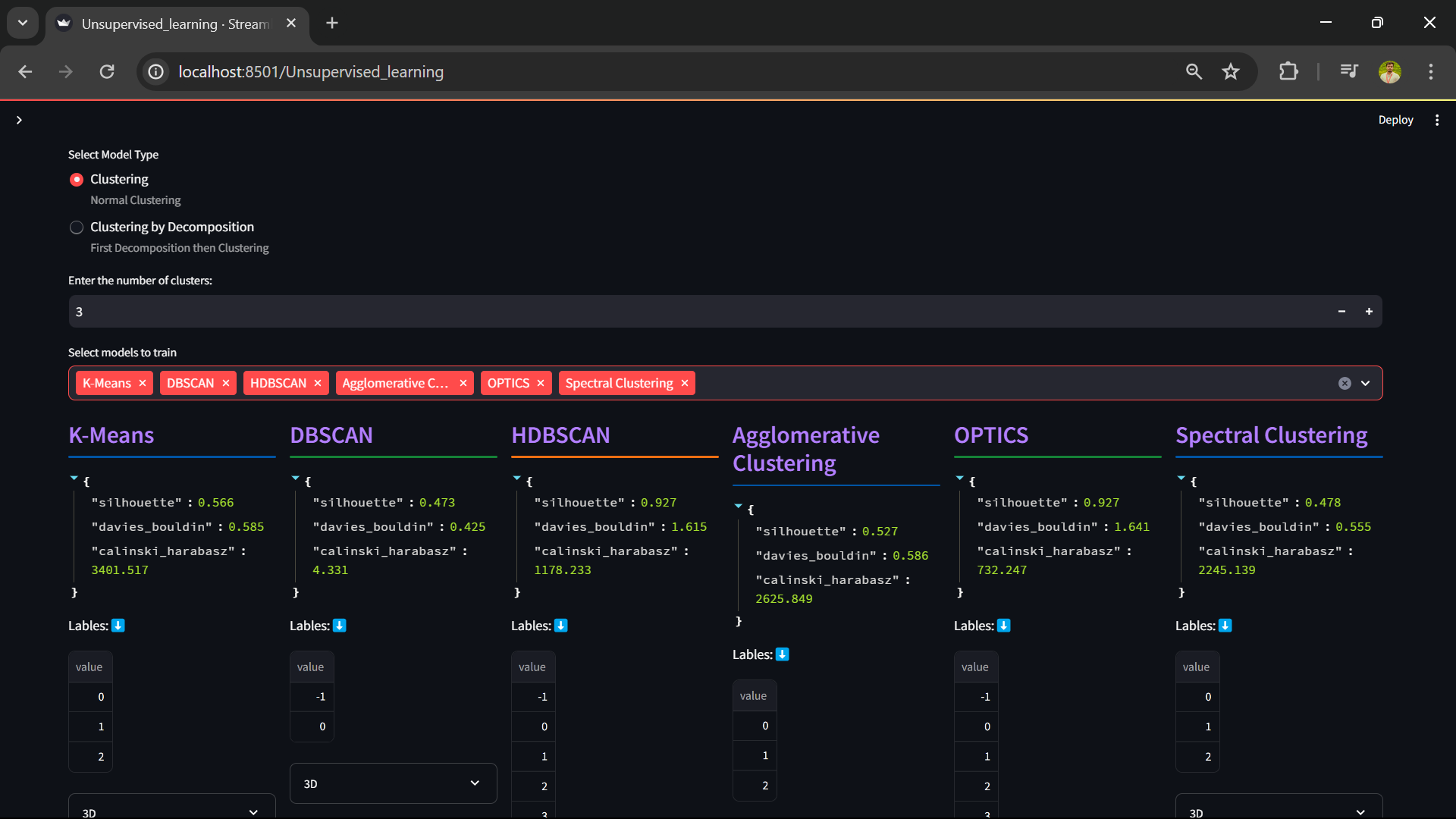
glookml)Un-supervised Multi Model Comparison Charts
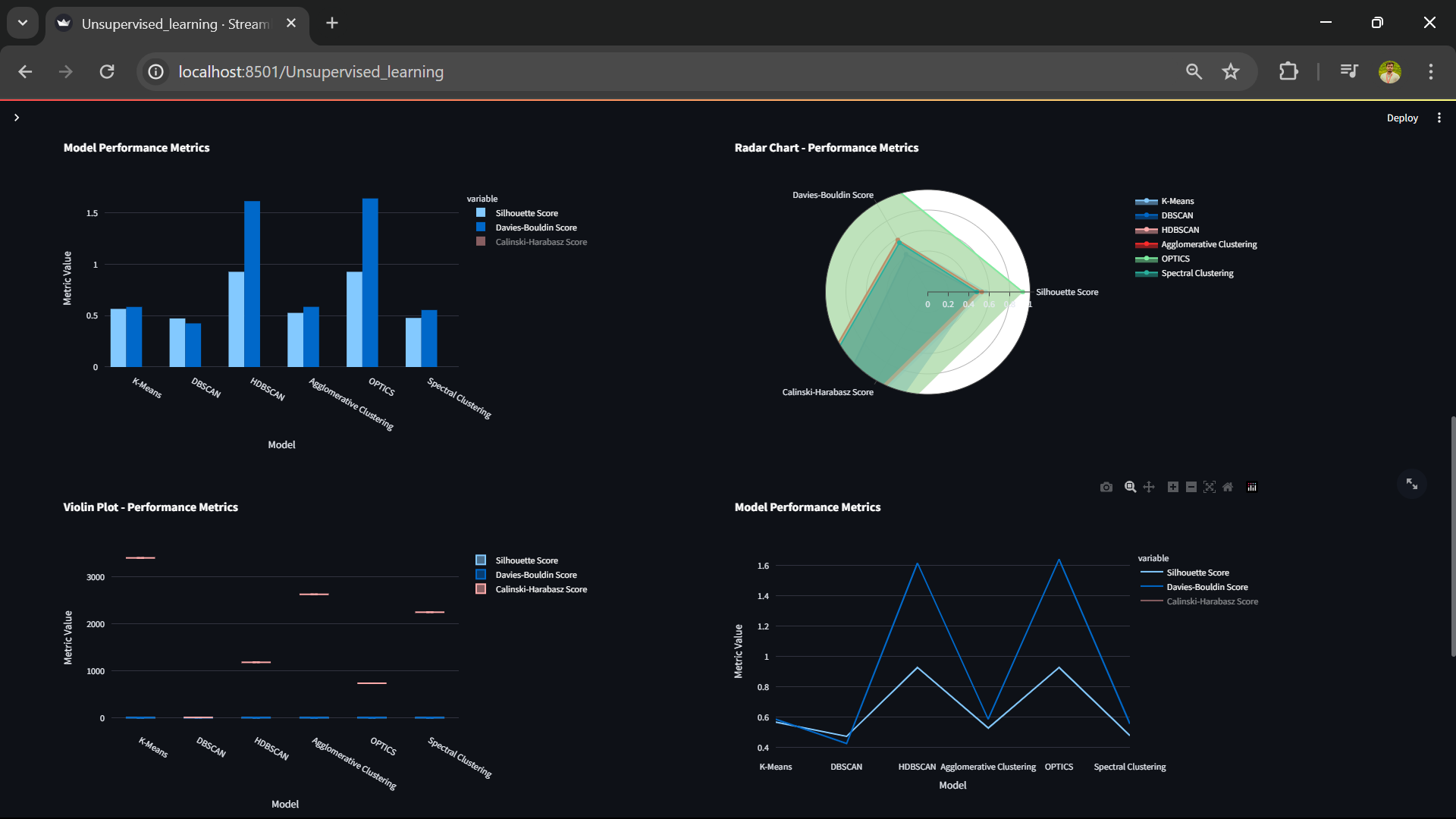
glookml)Custom Model Building
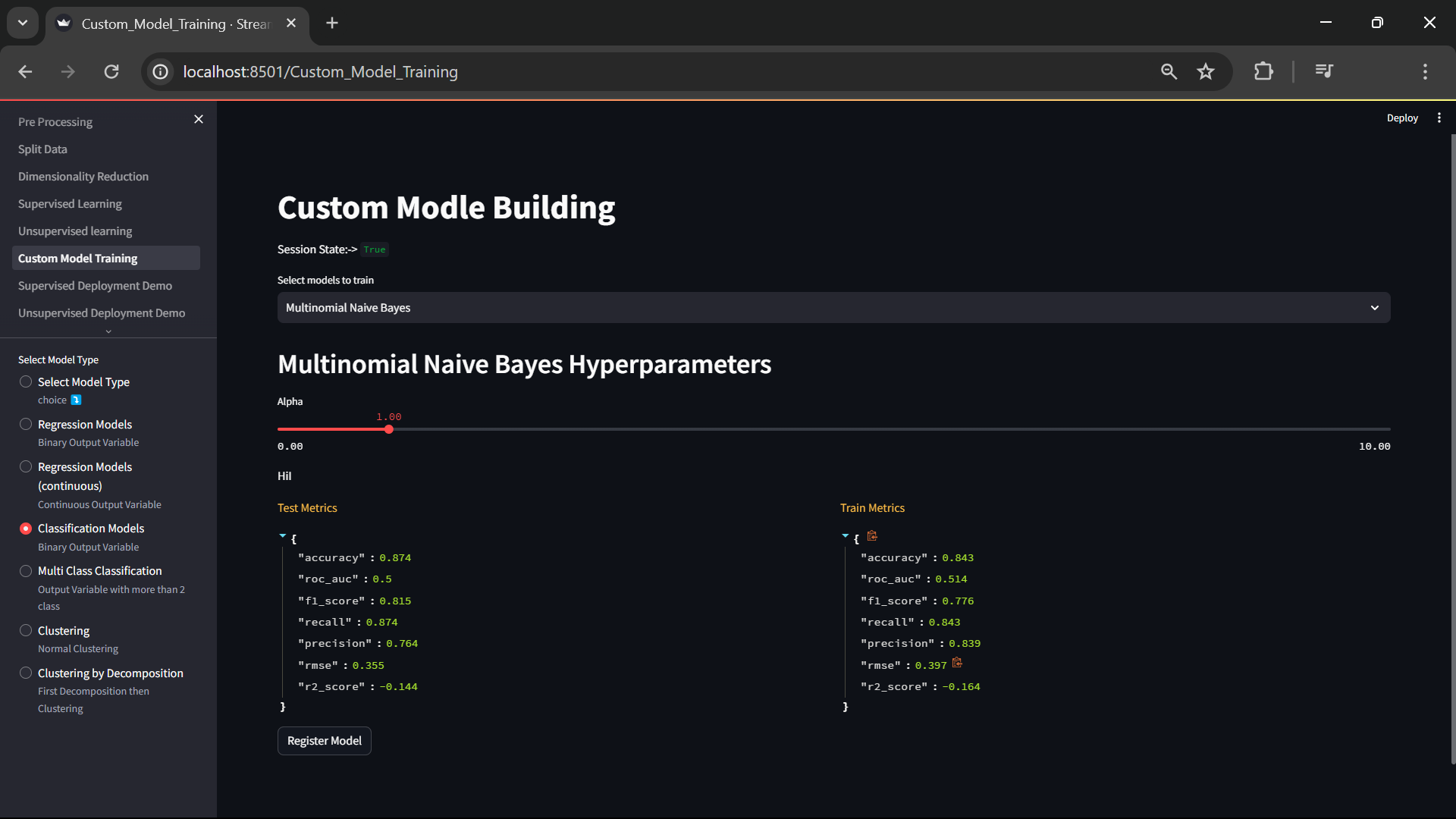
glookml)Deployment Demo
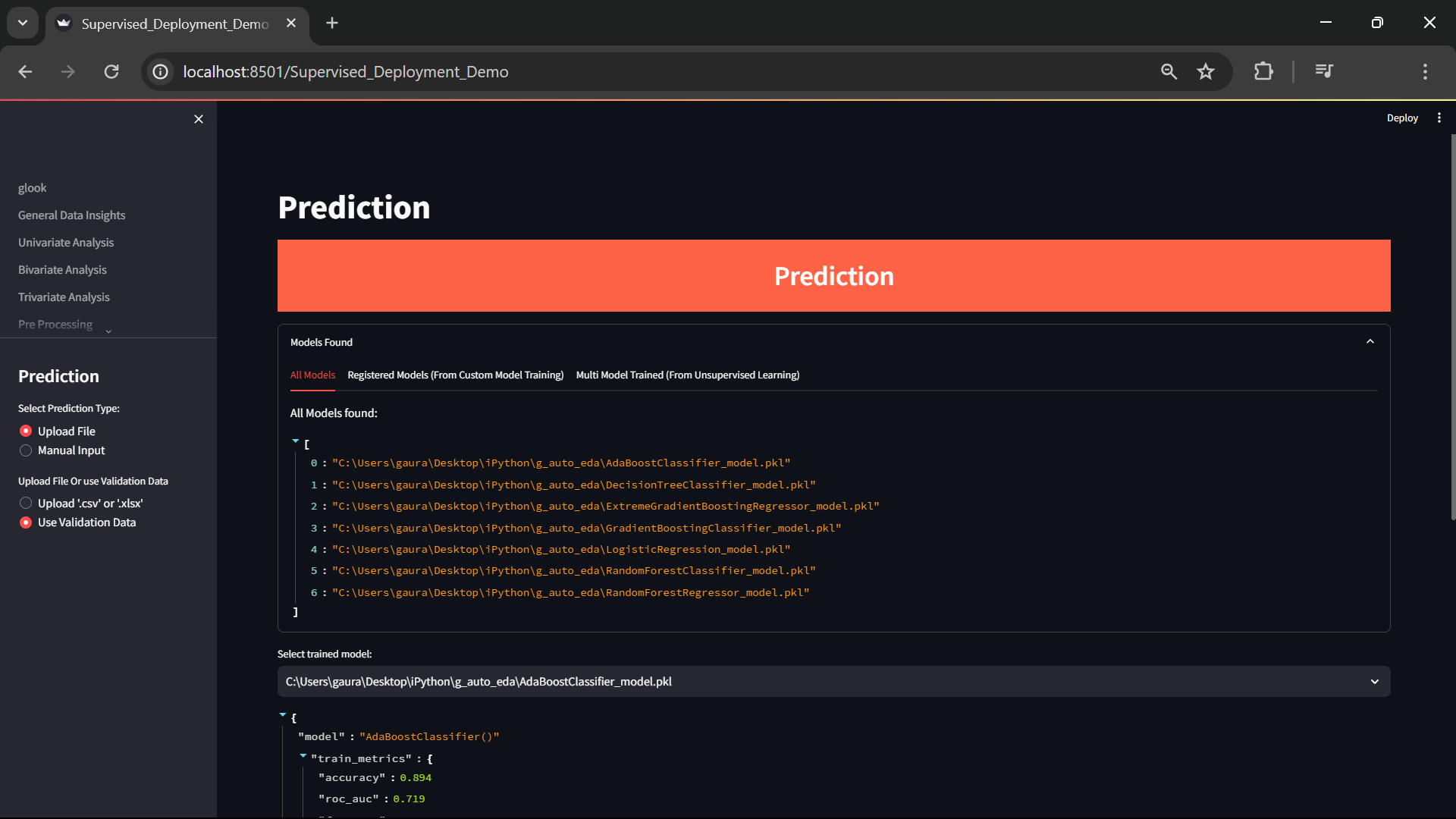
glookml)Supervised Model Building Predictions
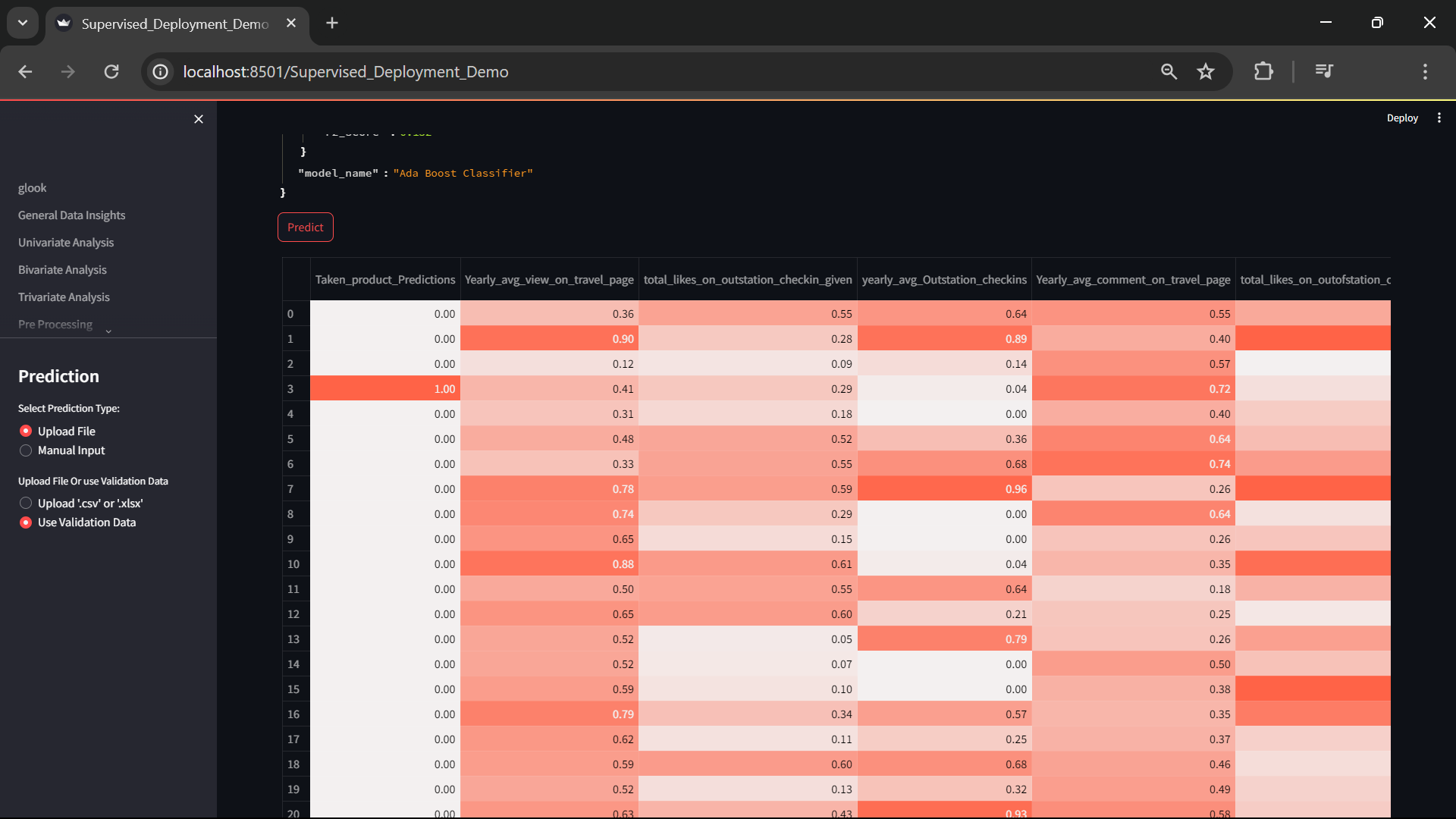
glookml)Un-supervised Model Building Predictions
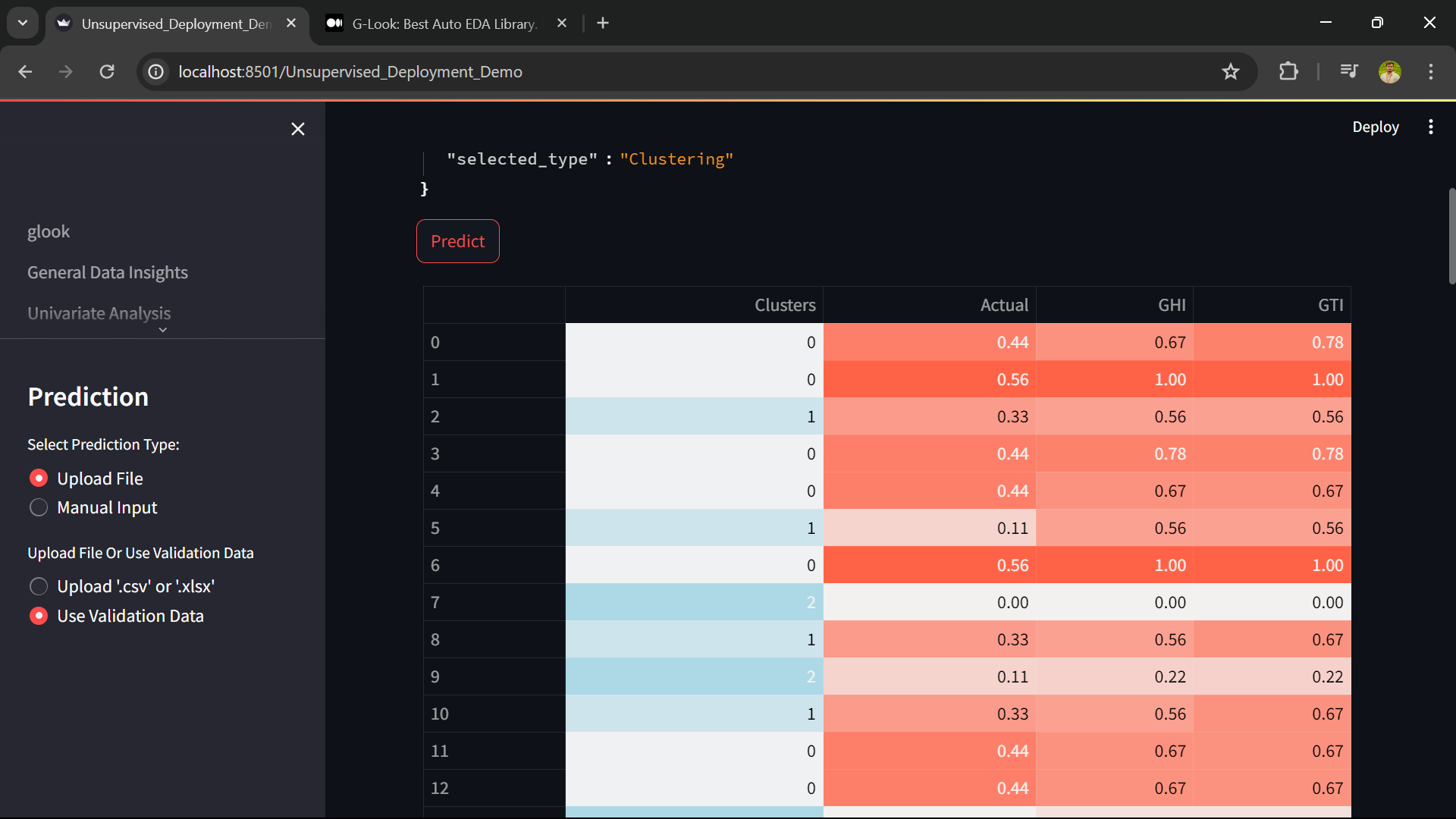
glookml)Supported Formats
glook supports various data formats, including CSV & Excel.
after what should I include
Related Projects
Check out G-Vision Automation package for computer vision tasks. The package offers tools for image classification, object detection, and more.
Getting Help
If you encounter any issues or have questions about using glook, please feel free to open an issue on the GitHub repository. We'll be happy to assist you.
License
This project is licensed under the MIT License - see the LICENSE file for details.
Project details
Release history Release notifications | RSS feed
Download files
Download the file for your platform. If you're not sure which to choose, learn more about installing packages.


















